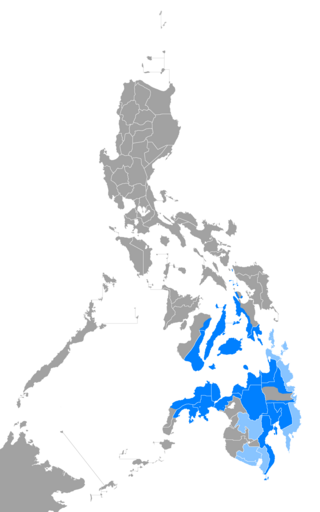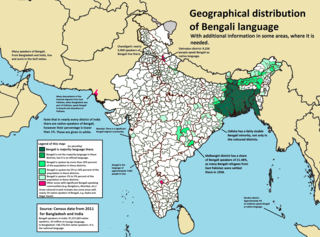Related Research Articles

Arabic is a Semitic language spoken primarily across the Arab world. Having emerged in the 1st century, it is named after the Arab people; the term "Arab" was initially used to describe those living in the Arabian Peninsula, as perceived by geographers from ancient Greece.

Gurmukhī is an abugida developed from the Laṇḍā scripts, standardized and used by the second Sikh guru, Guru Angad (1504–1552). It is commonly regarded as a Sikh script, used by Punjabi Sikhs to write the Punjabi language, and is one of the official scripts of the Indian Republic, while the Arabic-based Shahmukhi script is used in Punjab, Pakistan.

Punjabi, sometimes spelled Panjabi, is an Indo-Aryan language of the Punjab region of Pakistan and India. It has approximately 113 million native speakers.
Indian English (IE) is a group of English dialects spoken in the Republic of India and among the Indian diaspora. English is used by the Indian government for communication, along with Hindi, as enshrined in the Constitution of India. English is also an official language in seven states and seven union territories of India, and the additional official language in seven other states and one union territory. Furthermore, English is the sole official language of the Indian Judiciary, unless the state governor or legislature mandates the use of a regional language, or if the President of India has given approval for the use of regional languages in courts.

Odia, , is an Indo-Aryan language spoken in the Indian state of Odisha. It is the official language in Odisha, where native speakers make up 82% of the population, and it is also spoken in parts of West Bengal, Jharkhand, Andhra Pradesh and Chhattisgarh. Odia is one of the many official languages of India; it is the official language of Odisha and the second official language of Jharkhand. The language is also spoken by 700,000 people in Chhattisgarh.

Cebuano is an Austronesian language spoken in the southern Philippines. It is natively called by its generic term Bisaya or Binisaya and sometimes referred to in English sources as Cebuan. It is spoken by the Visayan ethnolinguistic groups native to the islands of Cebu, Bohol, Siquijor, the eastern half of Negros, the western half of Leyte, and the northern coastal areas of Northern Mindanao and the Zamboanga Peninsula. In modern times, it has also spread to the Davao Region, Cotabato, Camiguin, parts of the Dinagat Islands, and the lowland regions of Caraga, often displacing native languages in those areas.

Bhojpuri is an Indo-Aryan language native to the Bhojpur-Purvanchal region of India and the Terai region of Nepal. It is chiefly spoken in western Bihar, eastern Uttar Pradesh and northwestern Jharkhand. It is an eastern Indo Aryan language and as of 2000 is spoken by about 5% of India's population. It is sociolinguistically considered to be one of the seven main Hindi dialects.

The Odia script is a Brahmic script used to write primarily Odia language and others including Sanskrit and other regional languages. It is one of the official scripts of the Indian Republic. The script has developed over more than 1000 years from a variant of Siddhaṃ script which was used in Eastern India, where the characteristic top line transformed into a distinct round umbrella shape due to the influence of palm leaf manuscripts and also being influenced by the neighbouring scripts from the Western and Southern regions.
Indian poetry and Indian literature in general, has a long history dating back to Vedic times. They were written in various Indian languages such as Vedic Sanskrit, Classical Sanskrit, Telugu, Tamil, Odia, Maithili, Kannada, Bengali, Assamese, Urdu, and Hindi. Poetry in foreign languages such as English also has a strong influence on Indian poetry. The poetry reflects diverse spiritual traditions within India. In particular, many Indian poets have been inspired by mystical experiences. Poetry is the oldest form of literature and has a rich written and oral tradition.
A.tong is one of the Garo dialect Sino-Tibetan language which is also related to Koch, Rabha, Bodo other than Garo language. It is spoken in the South Garo Hills and West Khasi Hills districts of Meghalaya state in Northeast India, southern Kamrup district in Assam, and adjacent areas in Bangladesh. The correct spelling "A.tong" is based on the way the speakers themselves pronounce the name of their language. There is no glottal stop in the name and it is not a tonal language.

Hong Kong English is a variety of the English language native to Hong Kong. The variant is either a learner interlanguage or emergent variant, primarily a result of Hong Kong's British overseas territory history and the influence of native Hong Kong Cantonese speakers.

Kalahandi district is a district of Odisha in India. Archaeological evidence of Stone Age and Iron Age human settlement has been recovered from the region. Asurgarh offered an advanced, well civilised, cultured and urban human settlement about 2000 years ago in the region. In South Asia it is believed that the lands of Kalahandi district and Koraput district were the ancient places where people started cultivation of paddy. In ancient time it was known as Mahakantara and Karunda Mandal, which means treasure of precious stones like karandam (corundum/manik), garnet, beruz, neelam, and alexandrite, etc. Manikeswari is the clan deity of Kalahandi may also signify its historical name.

English is a West Germanic language in the Indo-European language family, with its earliest forms spoken by the inhabitants of early medieval England. It is named after the Angles, one of the ancient Germanic peoples that migrated to the island of Great Britain. Existing on a dialect continuum with Scots and then most closely related to the Low Saxon and Frisian languages, Modern English is genealogically Germanic. Although its grammar and core vocabulary are mostly West Germanic, it has borrowed many words from French and Latin, as well as some grammar and core vocabulary from Old Norse. Speakers of English are called Anglophones.

Tapan Kumar Pradhan is an Indian poet, writer and translator from Odisha. He is best known for his poem collection "Kalahandi" which was awarded second place in Sahitya Akademi's Golden Jubilee Indian Literature Translation Prize for Poetry in 2007. His other works include "Equation", "I, She and the Sea", "Wind in the Afternoon" and "Dance of Shiva".
A. J. Thomas is an Indian poet, translator and editor writing in English. He is best known as editor of Indian Literature, the bimonthly English journal of Sahitya Akademi which he edited till 2010.

Finnish is a Uralic language of the Finnic branch, spoken by the majority of the population in Finland and by ethnic Finns outside of Finland. Finnish is one of the two official languages of Finland. In Sweden, both Finnish and Meänkieli are official minority languages. The Kven language, which like Meänkieli is mutually intelligible with Finnish, is spoken in the Norwegian county Troms og Finnmark by a minority group of Finnish descent.

Sambalpuri is an Indo-Aryan language variety spoken in western Odisha, India. It is alternatively known as Western Odia, and as Kosali, a recently popularised but controversial term, which draws on an association with the historical region of Dakshina Kosala, whose territories also included the present-day Sambalpur region.

Bengali, generally known by its endonym Bangla, is an Indo-Aryan language native to the Bengal region of South Asia. With approximately 300 million native speakers and another 40 million as second language speakers, Bengali is the sixth most spoken native language and the seventh most spoken language by the total number of speakers in the world. Bengali is the fifth most spoken Indo-European language.
The history of Kalahandi goes back to the primitive period where a well-civilized, urbanized, and cultured people inhabited this land mass around 2000 years ago. The world's largest celt of Stone Age and the largest cemetery of the megalithic age have been discovered in Kalahandi. This shows the region had a civilized culture since the pre-historic era. Asurgarh near Narla in Kalahandi was one of the oldest metropolises in Odisha whereas the other one was Sisupalgarh near Bhubaneswar. Some other historical forts in the region includes Budhigarh, Amthagarh, Belkhandi and Dadpur-Jajjaldeypur. This land was unconquered by the great Ashoka, who fought the great Kalinga War, as per Ashokan record. In medieval period the region had played a prominent role to link South India, Eastern India and Central India region and witnessed the battle ground for Somavamsi, Chola, Kalachuris of Kalyani and Eastern Ganga dynasty. Kalahandi region was the main route for Chola to attack Subarnapur.
Konkani is a southern Indo-Aryan language belonging to the Indo-European family of languages spoken in the Konkan coastal region of India. It has approximately 3.6 million speakers.
References
- ↑ Kalahandi ra Loka Sahitya, Mahabir Sanskrutika Anusthan, Bhawanipatna, Orissa, India
- ↑ Pradhan, Dr Tapan Kumar (1 August 2020). Kalahandi : The Untold Story. ISBN 9788194579717 . Retrieved 28 August 2022. (pages 15-20)
- ↑ Pradhan, Dr Tapan Kumar (1 August 2020). Kalahandi : The Untold Story. ISBN 9788194579717 . Retrieved 28 August 2022. (pages 74-82 & 243-250)